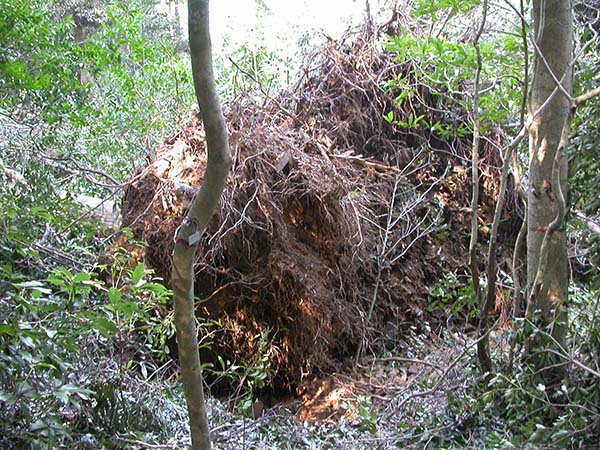Home > Research > Research Results > Research Results 2017 > Typhoons are the biggest factor causing tree death in a lucidophyllous forest in Miyazaki Prefecture
Update:October 4, 2017
Main content starts here.
Typhoons are the biggest factor causing tree death in a lucidophyllous forest in Miyazaki Prefecture
| Article title |
Associations between the dynamics in a lucidophyllous forest in the Aya town, Miyazaki Prefecture and various relevant environmental factors |
|---|---|
| Author (affiliation) |
Satoshi Saito (a), Osamu Nagafuchi (b), Koyomi Nakazawa (b), Seiichi Kanetani (c), Kaoru Niiyama (d) (a) Department of Plant Ecology, FFPRI, Tsukuba, Ibaraki, Japan. (b) Fukuoka Institute of Technology, Fukuoka, Japan. (c) Kyushu Research Center, FFPRI, Kumamoto, Japan. (d) Department of Forest Vegetation, FFPRI, Tsukuba, Ibaraki, Japan. |
| Publication Journal |
Environmental Science, 30(3): 190–202, May 2017, DOI: 10.11353/sesj.30.190( External link ) |
| Content introduction |
In recent years, there have been many reports regarding atmospheric pollutants that adversely affect forests in various parts of Japan. With respect to lucidophyllous forests in Kyushu, the region located closest to the Asian continent, concern regarding the negative impacts of the so-called transboundary pollutants, which cross the sea to reach Japanese shores, is increasing. In addition to such air pollutants, a wide range of factors such as windfalls by typhoons and decortication by deer and other animals also contribute to the withering of trees. Therefore, determining the exact cause of tree death solely on the basis of observing the current state of forests is often difficult. In this study, we investigated the causes of tree deaths in laurel forests on the basis of observational and environmental data collected over the past two decades. The results indicated that among various environmental factors, typhoons had the biggest impact on tree death. During the observation period, the highest number of trees died in 1993 when the extremely powerful Typhoon Yancy made landfall on Kyushu. Even the trees that survived in the immediate aftermath of the typhoon sustained serious damage to their branches and trunks, and nearly half of the damaged trees died by 2013. Meanwhile, an accumulation of ozone, a typical air pollutant, was detected in branches and leaves in the forest canopy; however, we could not ascertain whether the increased ozone concentration was a direct cause of tree death and/or reduced tree growth. Projects are currently underway in Kyushu to conserve lucidophyllous forests. To promote such conservation projects, accurately evaluating the vulnerability of forests despite environmental changes is vital. With typhoons predicted to further grow in strength in the future, the results of this study suggest an ever-increasing impact on lucidophyllous forests. Therefore, continuous careful monitoring of environmental changes and how they affect lucidophyllous forests is essential.
Photo. A large tree knocked down by a typhoon. |
Copyright © Forest Research and Management Organization. All rights reserved.

